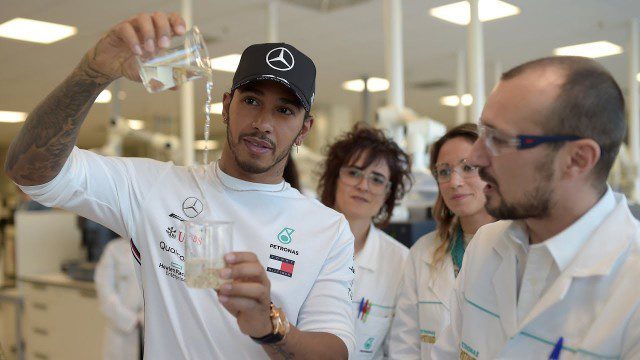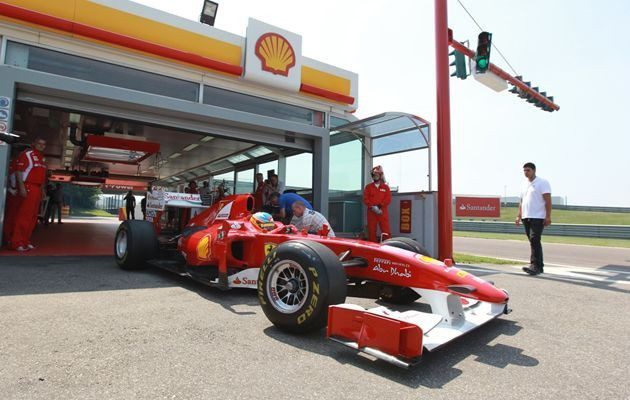
What happens if you fill up a Formula 1 car with regular gasoline?
According to the rules, fuel in the championship should not differ much from gasoline at gas stations. But is it really so?
Fans of Formula 1 periodically ask the question, is it possible that the cars of Lewis Hamilton and his rivals will go with gasoline? In general, yes, but, like everything in Formula 1, not everything is so simple.

Since 1996, the FIA has been closely monitoring the composition of the fuel used in Formula 1. Mainly due to the war of fuel suppliers in the first half of the 90s, when the chemical composition of the fuel reached unexpected heights, and the price of 1 liter of fuel for Williams Nigel Mansell, for example , reached $ 200 ..
Therefore, today the fuel used in Formula 1 cannot contain elements and components that are absent in regular gasoline. Yet racing fuel differs from conventional fuel and produces more complete combustion, which means more power and more torque. Exactly how the fuel suppliers are doing this remains a mystery, and they have lost a battle with the FIA over the past few seasons over whether they can use engine oil for better combustion.
Formula 1 teams like to say that the fuel is "optimized" for them by the supplier they work with, but nothing more. Because the elements and components of gasoline are the same, but give different results, again due to different interactions. Chemistry is again top notch.
Formula 1 rules now require gasoline to be 5,75% bio-based, since two years after the introduction of this order at the world championship, it was adopted for mass gasoline sold in Europe. By 2022, the supplement should be 10%, and for the more distant future, the use of gasoline, which is practically not a petroleum product, will remain.
The minimum octane number of gasoline in Formula 1 is 87., so indeed this fuel is very close to what is offered at gas stations, generally speaking. For just over 300 km, while a Formula 1 race lasts, drivers are allowed to use 110 kg of fuel - in the World Championship, gasoline is measured to avoid shock from temperature changes, shrinkage, etc., the temperature at which these 110 kg are measured.

What will happen if regular gasoline is poured into a Formula 1 car? Currently, the latest answer to this question is from 2011. Then Ferrari and Shell conducted an experiment at the Italian Fiorano track. Fernando Alonso has been driving the car since the 2009 season with an 2,4-litre V8 naturally aspirated engine, since engine development was put on hold. The Spaniard first did 4 laps on racing fuel, and then another 4 laps on normal gasoline.
Alonso's fastest lap on race petrol was 1.03,950 0,9 minutes, while on normal petrol his time was XNUMX seconds shorter.
How are the two fuels different? With race fuel, the car accelerates better in corners, but with regular Alonso, he achieved more straight line speed.
And finally, the answer is yes, a Formula 1 car can run on regular gasoline, but it won't run the way engineers and drivers want it to.

